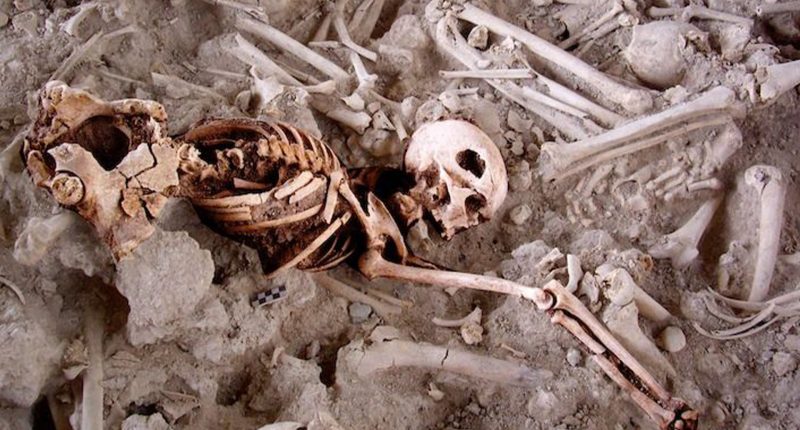ANCIENT ‘doctors’ were able to perform two successful skull surgeries on a woman roughly 4,500 years ago, experts have revealed.
In what would have been an incredible feat for medicine at the time, analysis of a woman’s skull recovered from a Copper Age burial site in Spain suggests she survived both procedures.
Two overlapping holes with evidence of healing were detected between her temple and the top of her ear.
The first hole was was about two inches wide and one inch long, while the second incision was around half that size.
“This involves rubbing a rough-surfaced lithic [stone] instrument against the cranial vault, gradually eroding it along all its edges to create the hole,” Sonia Díaz-Navarro, of the University of Valladolid and lead researcher on the discovery, told Live Science.
“To perform this surgery, the affected individual likely had to be strongly immobilised by other members of the community or previously treated with a psychoactive substance that would alleviate pain or render them unconscious.”
READ MORE ON ARCHAEOLOGY
Each of the wounds had been scraped to the bone and had well-defined edges, she added.
Judging the way the wounds healed, researchers believe she lived for several months after the second surgery.
The woman, between 35 and 45-years-old when she died, was discovered in the southeastern burial site known as Camino del Molino.
It’s unclear why the woman needed the surgery.
Most read in Tech
Though researchers have uncovered other remains bearing traumatic injuries at the funerary site.
She was one of 1,348 individuals found at Camino del Molino, which was used from 2566 to 2239 BC.
Díaz-Navarro suspects the woman may have needed surgery as a result of head trauma, in an effort to remove damaged bone fragments from her head.
Documentation of prehistoric surgical procedures is “rare”, according to Díaz-Navarro, especially on the temporal region of the head.
But the “scraping” technique used would have lowered the risk of a bleed out and damage to the meninges or the brain.
The techniques would, therefore, lower the risk of surgical infections and death.
Díaz-Navarro doesn’t doubt that sterile instruments and naturally antibiotic plants were also used to stave off any infections.










